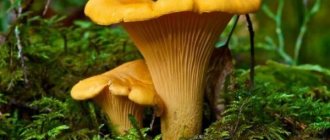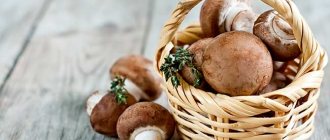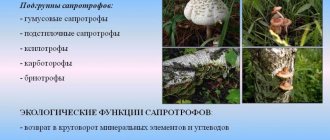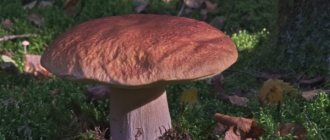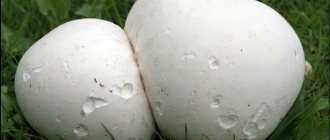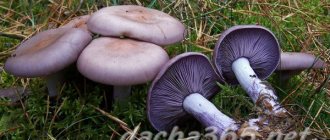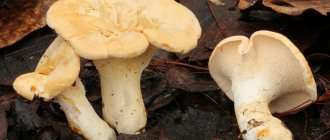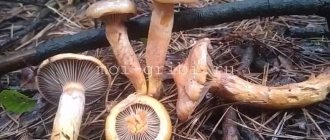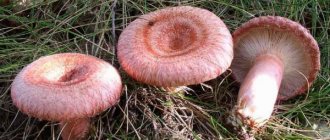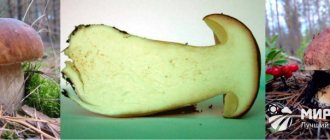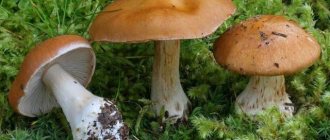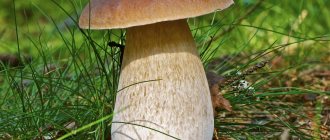These mushrooms are not very common among mushroom hunting enthusiasts. There are several reasons for this: the dissonant name, appearance (completely unlike the usual species) and a small amount of information. Meanwhile, in other countries these mushrooms are very famous and consumed. Want to know more about dung beetles? Then read on.
White dung beetle (Coprinus comatus)
History of the genus Coprinus
Dung beetle, or Coprinus (lat. Coprinus) is a genus of mushrooms belonging to the champignon or agaric family (Agaricaceae).
The history of this family resembles the history of the old ones. aristocratic families. “My family was once noble, but now dilapidated...” - this can also be said about the genus of dung mushrooms. Or rather, not so dilapidated as noticeably thinned out.
At the end of the twentieth century, it included about five dozen species of mushrooms. But after geneticists intervened, some of the mushrooms were excluded from the genus Coprinus and redistributed into the genera Coprinellus, Coprinopsis and Parasola.
This process has not yet been completed. Therefore, it is difficult to name the exact number of mushrooms included in the genus Coprinus. The Russian and British Wikipedias are still, as they say, confused in their testimony. According to the first version, there are fourteen types of mushrooms, according to the second - eighteen.
Only one thing can be said with confidence: the world of mushrooms is complex, mysterious and not yet fully understood.
This article will focus on dung mushrooms, which are definitely classified in the genus Coprinus.
Description of Coprinus
Their cap shape is conical, bell-shaped or convex. Most often it does not open, but sometimes there are specimens with a flat cap. The top of the mushroom is covered with a coating in the form of flakes or scales.
The stem of the mushroom is hollow, smooth, and has a cylindrical shape.
The cap flesh is not very fleshy. The leg has a fibrous structure.
On the lower part of the cap there are multiple thin white plates that turn black when ripe.
In the photo is the shimmering dung beetle.
Edible species of dung beetles (white dung beetle, gray dung beetle). If you're not sure, don't buy it!
Interesting video
Reproduction
A distinctive feature of all coprinuses is their unique method of reproduction. Due to the fact that the lower plates of the fungus, where the spores are contained, are very closely adjacent to each other, coprinus cannot easily disperse them in the wind.
And then it turns on a special mechanism called autolysis. The mushroom produces special enzymes that begin to actively digest the mushroom cap. That is, the mushroom actually eats itself.
As a result of this process, spores are released, and the cap turns into a viscous black liquid that flows from the stem and spreads over the surface of the earth.
An amazing way of self-sacrifice on the part of parents for the sake of continuing their own family!
Interesting article - Grifola curly: listed in the Red Book.
Culinary use
This mushroom belongs to the conditionally edible mushrooms of the 4th food category. It is believed that it does not need to be boiled before use. The main problem for the collector is to bring the common dung beetle home whole - it is very brittle, and to do so before the mushroom turns into a lump of unappetizing black mucus. Those who like to eat this mushroom often have to trot from the collection point to their home, while carrying a basket of mushrooms in front of them at outstretched arms, so as not to shake it too much. Due to its fragility, the common dung beetle also does not tolerate pickling or salting.
Chemical composition and calorie content of the dung mushroom
100 grams of coprinus mushrooms contain about 22 kcal.
| Squirrels | 46% | 3.9 g |
| Fats | 5% | 0.34 g |
| Carbohydrates | 49% | 3.26 g |
Dung mushrooms also contain fiber, amino acids, B vitamins, macro- and microelements (phosphorus, magnesium, sodium, potassium, calcium, zinc, selenium, manganese).
Important! Please don't eat mushrooms based solely on what you read on the internet!
Species of Coprinus
White dung beetle (Coprinus comatus)
Mushroom 5–15 cm high. The cap is white, covered with scales. Because of this, the white dung beetle is also called shaggy. The shape of the cap at a young age is spindle-shaped. Later it opens into the shape of a bell.
The lower plates are thin white, darkening with age. The leg is thin, smooth, hollow, up to 10 cm high.
The white dung beetle is widespread. It grows from spring to autumn in the forest, fields, vegetable gardens, orchards and along roads.
White dung beetle is edible and has good taste. Mushrooms are harvested at a young age and processed quickly. Cut white dung beetles are not stored for long.
Gray dung beetle (Coprinopsis atramentaria)
Mushroom with a gray or grayish-brownish cap. The cap is covered with dark scales. The shape is ovoid when young, then opens into a bell shape with cracked edges. The leg is white, hollow, darkish at the base, 1–2.5 cm in diameter.
The lower plates are wide, white, darkening with age. Found almost everywhere from April to November. Prefers to grow in damp places, gardens, fields, compost heaps and rotting wood debris. Most often it grows in groups.
Belongs to the category of conditionally edible mushrooms. Before use, gray dung beetle must be boiled. The taste of the mushroom is sweetish, there is no smell.
Flickering dung beetle (Coprinellus micaceus)
A mushroom with a bell-shaped or ovoid cap. The cap itself is 2–4 cm in diameter, furrowed, grayish-brown, darker at the apex, covered with small shiny scales. The leg is thin, fibrous, hollow, fragile. The lower plates are thin, adherent, white, darkening with age.
Found almost everywhere. It grows in groups or clumps from May to November on rotting wood, as well as in parks, gardens, pastures, etc.
An inedible mushroom, although it is also not considered poisonous.
Willow dung beetle (Coprinellus truncorum)
A mushroom with an ovoid whitish cap. The grooves on the cap are more pronounced than those of the shimmering dung beetle. The edge of the cap is uneven and split. The leg is long, thin, smooth, white, hollow inside. The lower plates are thin, wide, light, darken and turn brown with age.
The mushroom is widespread. It grows from spring to autumn almost everywhere.
Willow dung beetle is not considered poisonous, but it is not eaten.
Resinous dung beetle (Coprinopsis picacea)
A mushroom with an elongated, egg-shaped, large cap covered with white scales. The cap opens with age, taking on the shape of a bell. The leg is light, thin, hollow, up to 20 cm in height, about 2 cm in diameter, and has a slight coating. The lower plates are light.
Grows singly or in groups on decaying organic materials.
The resinous dung beetle has an unpleasant odor and is not eaten.
Common dung beetle (Parasola plicatilis)
A mushroom with a yellowish closed cap with a diameter of 1–3 cm, which brightens and opens with age. The surface of the cap is folded. The leg is 5–10 cm in height, thin, smooth, light, fragile. The lower plates are greyish, thin, attached.
Distributed almost everywhere.
The folded dung beetle has a very short life span - about a day. The fragile stem cannot withstand the weight of the cap, and the mushroom breaks and dies.
It is not considered poisonous, but is not eaten.
Taste qualities
Reviews about the nutritional value and taste of these conditionally edible mushrooms are very mixed. Only young specimens that do not have darkened plates are to be eaten. It should be remembered that dishes made from dung beetle are incompatible with alcoholic beverages and can cause quite severe poisoning. This feature made it possible to use the mushroom as a folk remedy for getting rid of alcoholism. Dung beetle has found quite wide application as a very powerful natural remedy for combating alcoholism. It’s quite simple to prepare a remedy against alcohol addiction yourself:
- the peeled and washed mushroom pulp should be finely chopped and then placed in a large, shallow frying pan;
- Mushrooms should be fried over low heat, stirring constantly, until the water has completely evaporated;
- The resulting fried mushroom mass must be dried very well, and then crushed to a powder using a coffee grinder.
- The resulting mushroom powder stores very well. It should be added to food or drink for persons prone to uncontrolled excessive drinking. After such a meal, the following symptoms may be observed, which go away on their own after some time and do not require medical intervention: redness or purplishness of the face;
- the appearance of bright purple spots on most of the body;
- paleness of the tip of the nose and earlobes;
- increased heart rate and pulse;
- the appearance of intense heat;
- the emergence of feelings of anxiety and fear;
- nausea and vomiting;
- visual and speech impairment.
It is recommended to add mushroom powder to food or drink at the rate of 2-3 g per day. The product should be used once every two days for ten days, and then take a two-week break. For people who don't drink, dung beetles are absolutely harmless, and there are no unpleasant sensations when consuming them.
Interesting read: Gall mushroom: description and properties, difference from porcini mushroom
Precautionary measures The white dung beetle has no dangerous counterparts with which it could be confused, but this is not a reason for carelessness. Fans of white dung beetle or beginners who want to try this mushroom need to be extremely careful and follow several safety rules so as not to suffer from consuming it. Let's look at the basic safety rules when collecting dung beetles. A distinctive feature of all dung beetles is the ability to autolyze. In simple terms, with age, the dung beetle produces special, caustic substances that trigger the process of self-digestion, which is why the mushroom turns into a black, resinous, inky mass.
How to distinguish the dung mushroom.
Benefits and harms
Edible species of dung beetles (white dung beetle, gray dung beetle) are recommended for consumption by diabetics due to its hypoglycemic effect. In addition, mushrooms are used in the treatment of prostate diseases. Chinese studies have shown that polysaccharides contained in mushrooms have the ability to strengthen the human immune system. Coprinus is highly valued for its content of B vitamins. It has antioxidant properties, useful in neutralizing free radicals, and also provides the body with important amino acids.
But we should not forget that dung beetles easily absorb harmful substances from the soil, including heavy metals. Therefore, you should pay special attention to the place where you collect mushrooms.
Interesting Facts
Agaricus atramentarius.
- The gray dung beetle is mainly known for its aforementioned property of causing alcohol intolerance by producing symptoms of intoxication. In this, it is similar to disulfiram, a substance that inhibits the synthesis of acetaldehyde dehydrogenase (as a result, the breakdown of alcohol in the body stops at the stage of acetaldehyde, a toxic substance, due to which poisoning occurs). As a result of the interaction of the fungus with ethyl alcohol, vomiting, nausea, a drop in blood pressure, a feeling of heat and a rush of blood to the head, redness of the face, and a strong increase in heart rate occur. For medical purposes, such a reaction is achieved to develop an aversion to drinking alcoholic beverages. However, it is not recommended to use dung beetles on your own in relation to drinking relatives, since such a reaction is usually controlled in a hospital setting, and uncontrolled use is fraught with troubles from the cardiovascular system, including death.
- Another known use (in the past) is in the preparation of special inks. To do this, glue (for fixation on paper) and clove oil (for aromatization) were added to the autolysis product of these fungi (the same black slurry). After drying, such ink formed a unique pattern that could be examined under microscopy, which was used to protect especially important documents from forgery.
How to grow dung mushrooms correctly?
Dung mushrooms can be grown both indoors and in open areas. Due to its unpretentiousness, the mushroom grows well and bears fruit. It is practically not affected by diseases and pests.
If you follow some rules, you can get a good harvest of mushrooms on your plot:
- When grown in open ground conditions, the area should be shaded, moist and cool.
- When growing indoors, be sure to ensure good air circulation.
- To obtain a good harvest, it is necessary to add fertilizers containing calcium to the soil substrate.
- The layer of soil substrate for planting mushrooms must be at least 20 cm.
- To prevent the substrate from drying out, it must be covered with paper or burlap and periodically sprayed with a spray bottle.
- It is necessary to plant mycelium in well-warmed soil.
Where to buy mycelium?
Mushroom mycelium can be bought in specialized stores, garden centers or ordered online. Manufacturers offer liquid, granular and powder forms of mycelium release.
Growing indoors
If you live in the southern part of the country, or simply want to harvest mushrooms all year round, and not just in the summer, then you can try growing dung beetles in controlled conditions. Any room with a controlled or simply stable temperature is suitable for this - a barn, cellar, balcony, greenhouse, greenhouse, etc. The main thing is that the temperature is not lower than 15°C and not higher than 25°C.
Many people are interested in how to remove white dung beetles in the basement. This mushroom really only requires a minimum of light, but the problem is that the dung beetle needs fresh air in sufficient quantities, which can be very difficult to achieve in the basement. Otherwise, the technology is exactly the same as for growing in the garden. To save space, the mycelium can be sown in boxes, which are then simply placed on top of each other in a checkerboard pattern.
The main enemy of mycelium is elevated temperature. Theoretically, the mycelium is capable of living for a short time even at a temperature of 30-35°C, but this should not be allowed. As soon as the thermometer exceeds 25 degrees, emergency measures should be taken to reduce the temperature.
Another threat that arises when growing mushrooms indoors is mice. Often the mycelium is sold in the form of wheat grains infected with white dung beetle spores. It is the grain that attracts rodents. Also, sometimes the appearance of insect larvae and snails can create a problem. The latter are most dangerous when growing mushrooms in the garden, but they can also settle in a greenhouse or basement.
Processing and storage
Proper culinary processing of coprinuses has a number of subtleties:
- Only young mushrooms with unopened caps should be eaten.
- Dung beetles are cooked within 1–2 hours after collection, as they spoil very quickly.
- Before cooking, mushrooms must be thoroughly washed in plenty of water and allowed to drain.
- Dung mushrooms are not suitable for drying and canning.
- Mushrooms can only be stored frozen. They must be fried or boiled before freezing.
- Dung mushrooms should not be consumed in combination with other mushrooms.
- Dung mushrooms should not be consumed in combination with alcohol.
Video gallery
Video reviews
A selection of videos with descriptions and recipes for preparing mushrooms
Mushrooms of Ukraine / Mushrooms of Ukraine, Mikhail Vishnevskiy, Dmitry Yakov
Dung mushroom for alcoholism
Gray dung beetle and dung beetle can cause serious negative reactions when consumed with alcohol.
Mushrooms contain the substance coprine, which when combined with alcohol can cause dizziness, nausea, fever and abdominal pain.
Pharmaceutical companies drew attention to this feature and began to use coprine (both natural and synthesized) to produce drugs that help in the treatment of alcohol addiction.
For the same purpose, dung mushrooms are used in alternative medicine. It is believed that daily use of small doses of coprinus causes a persistent aversion to alcohol in the patient.
But it is better to consult a doctor!
Edibility
It is considered conditionally edible, that is, it must be boiled before further use. It can then be used in any dish. This mushroom does not have its own taste (when cooked), so it serves as an excellent filler. For example, you can use it to make cutlets, potatoes, cabbage rolls and other dishes. The only thing this mushroom should not be combined with is alcohol, since when interacting with ethyl alcohol it causes symptoms of poisoning (similar to alcohol poisoning when using disulfiram).
Ways to combat dung fungus on the site
Due to its unpretentiousness, the dung mushroom grows almost everywhere. And this creates certain difficulties for garden owners. Spreading black puddles on the lawn and beds are not a particularly pleasant sight.
In order to get rid of mushrooms on the site, it is necessary not to create favorable conditions for their growth.
Do not store rotting wood on the site. If possible, you should avoid mulching your garden with sawdust.
Lawn aeration is also an effective means of controlling dung beetles. To do this, it is worth pricking the lawn with a pitchfork as often as possible.
In areas well lit by the sun, dung mushrooms do not grow.
Where does it grow
Dung beetles are saprotrophic fungi, that is, they assist in the decomposition of organic residues. They are found on soils enriched with nutrients. They also grow on humus and manure heaps, fertile and humus-rich soils, rotting stumps and plant debris. Can be found in pastures, vegetable gardens, lawns and gardens. Worms do not like this mushroom, but its fruiting body ages very quickly. Its lifespan lasts only about two days. Found from May to October.
